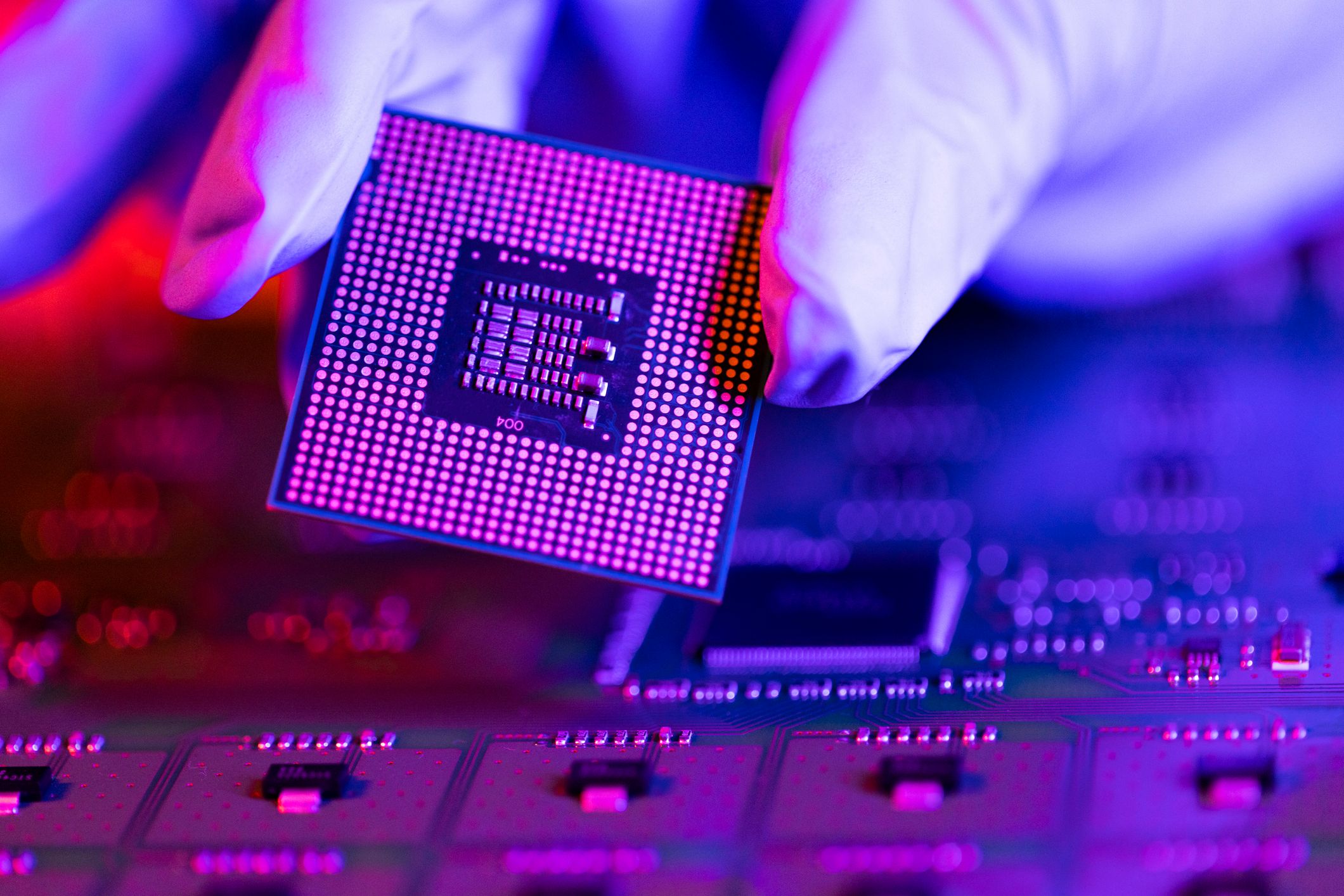
This contest isn't even close. Image source: Getty Images.
Let me cut to the chase. These two stocks have almost nothing in common.
NXP Semiconductors (NXPI +0.70%) is a solid business with a bright future. Advanced Micro Devices (AMD +2.31%) is a risky turnaround bet with a lot to prove. Apart from working in the same semiconductor industry, AMD and NXP couldn't be more different if they tried.
That's the view from 30,000 feet. Here's a more detailed version of the same argument.
By the numbers
|
Metric |
NXP |
AMD |
|---|---|---|
|
Trailing Revenue |
$6.9 billion |
$3.8 billion |
|
Trailing Adjusted Earnings Per Share |
$5.35 |
($0.69) |
|
Trailing Free Cash Flows |
$1.0 billion |
($0.2 billion) |
|
1-Year Stock Returns |
(13%) |
164% |
|
5-Year Stock Returns |
266% |
(24%) |
|
Market Cap |
$27.3 billion |
$4.1 billion |
|
Book Value |
$11.2 billion |
($0.5 billion) |
Data from YCharts..
Breaking down the financial data above, you'll find that NXP is firmly profitable and modestly priced. The stock trades at 2.4 times NXP's book value, which is on the lower end of price-to-book valuations among chip stocks with similar business models.
AMD, on the other hand, shows negative earnings and is burning cash. Sales have fallen 18% over the last four quarterly reports, and the company carries a negative book value. In other words, AMD's financial papers suggest that, if the company were to liquidate its assets, pay off its debts, and return the remainder to shareholders, investors would end up owing money to the debt holders.
Yet, AMD shares have nearly tripled over the last 52 weeks, while NXP shares lost 13%. The long-term picture works out the other way around, with NXP creating shareholder value, and AMD destroying it.
AMD's big picture
To AMD's credit, the company recently introduced a long-awaited graphics processor platform. The so-called Polaris architecture is locking horns with the equally fresh Pascal technology from arch-rival NVIDIA (NVDA +2.37%). That's a refreshing change from recent years, where AMD has been lagging far behind NVIDIA's graphics products in terms of both performance and bang for your buck.
But AMD is priced for perfection, and the company has a long history of making product promises it can't keep. Investors can only hope that AMD's Polaris and the upcoming Zen processors will make the company relevant again. That's a big leap of faith, not a calculated risk. And if the company fails to deliver, share prices would tumble down again. There's not much substance to this business.
NXP's view of the road ahead
The Dutch chipmaker is also betting the farm on a new market, but from a much stronger position than AMD. After merging with sector rival Freescale Semiconductor, the company has become the name to beat in automotive computing. That was a thriving sector when it was just based on a proliferation of semiconductors in modern infotainment and engine control systems. Now, the industry is taking its first trembling steps into self-driving cars.
It seems obvious that true autopilot systems for cars eventually will become commonplace. When that happens, you'll see a radical spike in car-mounted processing muscle. And NXP has built the perfect beast to capture this hockey-stick moment in time.
On top of all that, NXP's broad portfolio of data security and communications solutions would keep the company afloat in case the automotive computing boom rolls off the rails somehow. AMD doesn't have the luxury of a solid Plan B, and absolutely needs its handful of significant innovations to succeed. There is no safety net there.
So there you have it. NXP is already successful, and ready to launch into an even higher orbit as an automotive computing leader. In the opposite corner, AMD investors are betting that the company will ignite a turnaround rocket ride for the ages with the Zen and Polaris chips.
I would much rather invest in NXP's combination of promise and stability than in AMD's unproven hopes and dreams. How about you?



